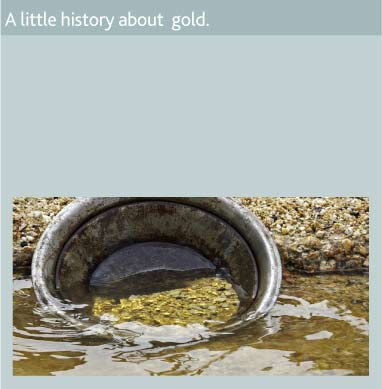
Gold Prospecting - Gold 101
Prospecting is the process of searching for minerals, fossils, or precious metals. The actual act of prospecting is very hard work. Not only does it involve a great deal of travel, traditionally via horse or foot, there are also the physical acts of panning and sifting. In addition, a true prospector would make claims to the land they are prospecting. This requires them to register their claim and mark out the four corners of their desired land.
This backbreaking work was common for gold prospectors during the 19th and 20th centuries. During this time gold rushes were a great lure to prospectors, although it was rare for a prospector to actually retire rich. Gold rushes have occurred all around the world.
Gold in California was found at Sutter’s Mill in 1849. Considered the greatest gold rush of all time, the miners who rushed to the area (known as forty-niners) extracted more than $500 million worth of gold from a 100-mile long stretch. Although the California Gold Rush may be the most well known, there have been others in Australia, Canada, Papua New Guinea, South Africa, and South America. More than 40 percent of the world’s total gold production has come from the Witwatersrand mines in South Africa.
Modern prospectors have a bit of an advantage over their predecessors. They have the advantage today of better training in the geology, as well as better technology to locate gold deposits. Prospecting today involves things such as geological mapping and rock assay analysis. However, just like the early prospectors, even today’s prospectors sometimes rely on intuition to help them locate their next big find.
The specific search for gold is done in two ways. Placer gold is located through the centuries old technique of panning for surface deposits. Deeper deposits can be found through trenching or drilling. Hard rock or lode deposits can be found with nothing more than a rock hammer and hand lens, although different types of hard rock gold deposits need different tools. Drilling can be used, geophysical methods, or geochemical laboratory assay can also help determine the location of lode gold.
Learn More:
Gold Mining
Learn about Alchemy
Found Treasure
Sell Gold at BrokenGold™! It's easy, just put your gold in the prepaid envelope and send it to us. You will receive a check 24 hours after we receive your gold. It is that easy! We have gained an excellent reputation on the web and have an ever-growing list of satisfied customers. If you have questions take a look at our Frequently Asked Questions page.
Back to the Gold 101

Gold was first discovered thousands of years ago in its natural state, in streams, which lead to mining all over the world. Its brilliance, natural beauty, great malleability and resistance to tarnish made it enjoyable to work with. Gold gave rise to the concept of money itself. Today gold is used for jewelry fabrication, industrial application, and medical uses, by governments and central banks and by private investors.



Sell scrap gold, silver and have more cash for gold jewelry.
To get started selling gold, fill out the form below.
 |  |
We are a proud member of TRUSTe, Gemological Institute of America, International Precious Metals Institute.

